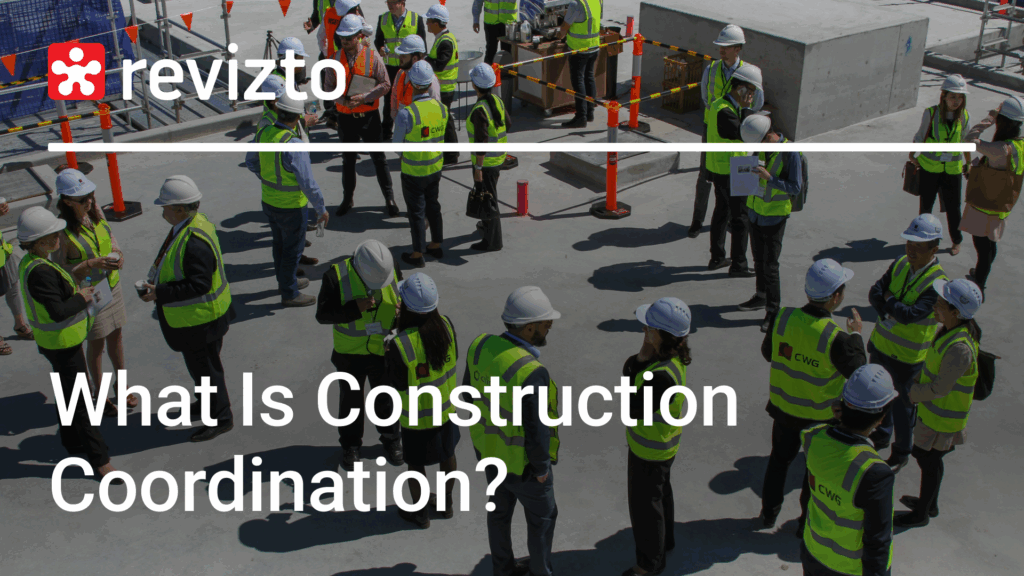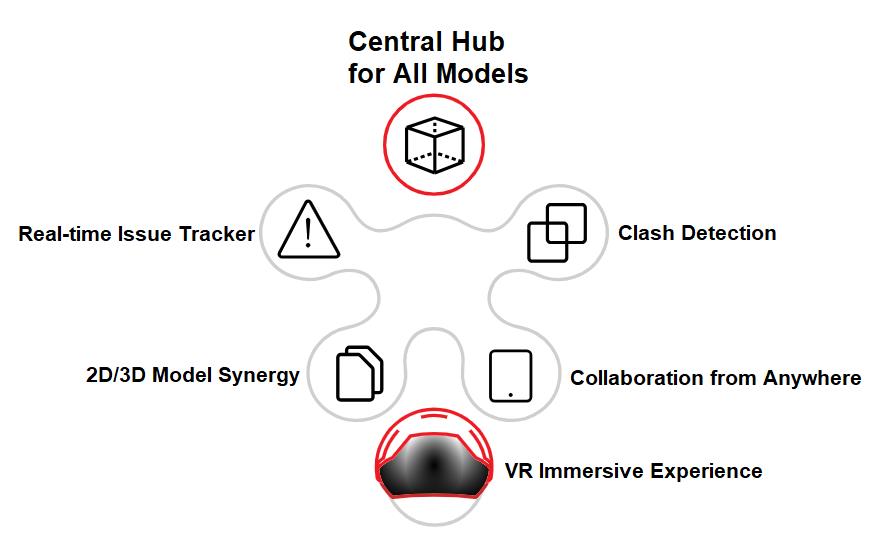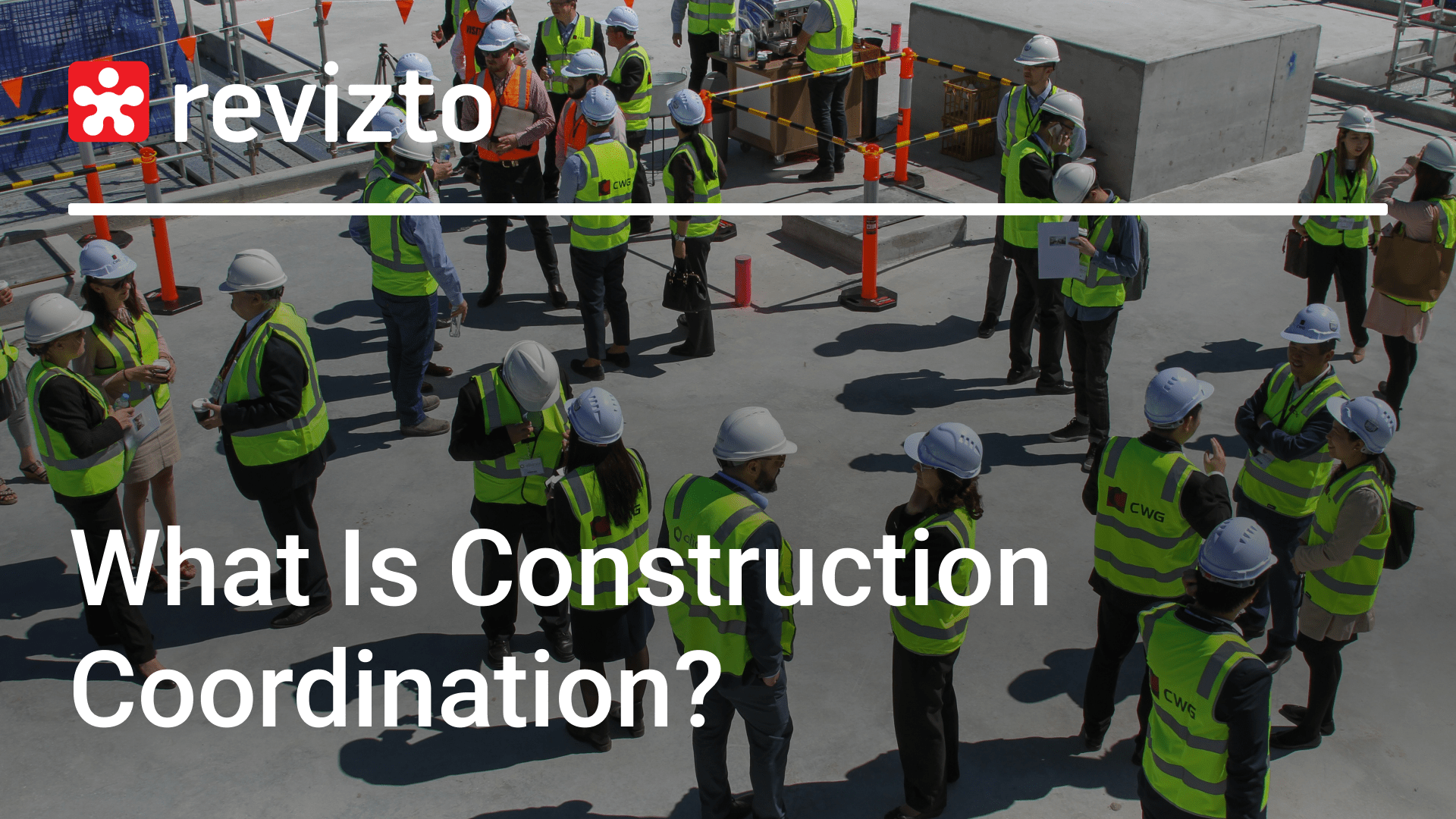What is construction coordination? Key roles, best practices, and challenges explained
- What is Construction Project Coordination?
- Who Are the Key Stakeholders in Construction Project Coordination?
- What Tools and Technologies Facilitate Better Coordination?
- What Are Common Challenges in Construction Project Coordination?
- How Can You Measure the Success of Construction Project Coordination?
- Key Takeaways
- FAQ

Coordination of construction projects can be challenging. While most project participants would agree that coordination is necessary and valuable, opinions vary on how to actually coordinate construction projects. This article will explore key aspects of construction project coordination — what it is, best practices, the roles of key stakeholders, common challenges encountered, and the benefits available.
What is Construction Project Coordination?
Construction projects are often complex and unique. Multiple projects may have similarities, but every construction project has unique features and challenges. Because of this project-specific nature, ongoing coordination is critical to construction project success.
While definitions may vary, construction project coordination in this article will be viewed as the process of organizing, planning, and guiding operations of a project. This may include communicating with team members on project schedules and activities, helping identify and resolve conflicts, assisting the project manager in monitoring project progress, and managing other daily coordination tasks. Project management, meanwhile, typically encompasses more overall responsibility for the project — overseeing scope, schedule, and budget and making key decisions. Project management and coordination may overlap, and on some projects, may be consolidated into one role. This article will focus on project coordination as a separate function subordinate to project management.
Why is Construction Project Coordination Important?
Project coordination supports quality, schedule, budget, resource, and risk management, and helps maintain communication among project participants. These aspects also represent some of the key components of project coordination.
Without proper coordination, issues may develop in various project stages. Left unchecked, these issues can escalate and adversely affect project outcomes.
What Are the Key Components of Construction Project Coordination?
Perhaps the most important aspect of project coordination is maintaining good communication, as this helps avert problems of all types. In a 2017 Pulse of the Profession® survey by the Project Management Institute (PMI), 30% of respondents said inadequate/poor communication was the primary cause of projects being deemed failures.
Quality
Quality management works hand-in-hand with project coordination. Quality management in construction typically includes both quality control and quality assurance. While definitions of these terms vary, the American Society for Quality (ASQ) offers the following: Quality control is the operational techniques and activities used to fulfill requirements for quality. Quality assurance is all the planned and systematic activities implemented within the quality system that can be demonstrated to provide confidence that a product or service will fulfill requirements for quality. In simple terms, quality control can be viewed as the checking and inspection of work, while quality assurance is the system that makes sure quality control is taking place.
In a 2024 study released by the Dodge Construction Network, a construction analytics provider, 98% of surveyed U.S. and Canadian contractors had projects that failed to meet minimum quality standards in the three previous years, such as errors, omissions, and rework. Approximately one-third of the 251 surveyed contractors cited coordination issues as the root cause of the construction quality challenges they experience.
Quality issues may arise during design, construction, and other project phases. By applying technology and recommended practices discussed later in this article, project coordination can help identify potential quality issues such as physical clashes and conflicts before they occur in the field.
Schedule
Schedule management is another area closely tied to project coordination. Construction projects may include hundreds or even thousands of activities. An overall schedule typically identifies key milestones and critical paths, but may not address how to coordinate the various activities to achieve the milestones. A project coordinator can make a deeper dive in working with various project participants to meet key deadlines.
Budget and Cost
Similarly, budget and cost issues can be better managed with project coordination. If not addressed in a timely manner, budget issues can adversely affect bottom lines of projects and participating firms. According to the Dodge study, 70% of surveyed contractors reported that cost performance is affected by coordination issues, and cite an average 9% budget increase. Over half of the surveyed contractors saw annual profit margins decline by an average of 10%.
Resources
Resource management, including personnel, materials, and equipment, often needs detailed coordination throughout construction project lifecycles. Teams can make initial estimates of resource needs, but the quantity and timing of resource needs may fluctuate as projects progress, requiring coordination to handle ebbs and flows.
Risk
Risk management might include identifying potential risks, assessing impacts of these risks, and developing mitigation strategies to minimize impacts. Project coordination can help monitor risks and identify adjustments needed to manage those risks. A risk management plan is often used to guide these efforts.
Other Components
Project coordination might also include other components, such as planning, safety management, and closeout. Based on project complexity, these components might become just as important as those previously mentioned.
Who Are the Key Stakeholders in Construction Project Coordination?
Key stakeholder groups in construction projects include the following:
- Owners
- Architects
- Engineers
- Contractors
- Subcontractors
Each of these organizations, in turn, may have key individuals, such as project managers, project coordinators, superintendents, and others who participate in coordination.
What Roles Do Owners Play in Project Coordination?
Owners typically identify a project’s primary purpose and goals and provide funding for the project. In some cases, owners take an active role in managing the project and participate in project coordination. In other cases, they delegate these tasks to consulting architects, engineers, contractors, and project managers.
What Roles Do Architects and Engineers Play in Project Coordination?
Construction projects typically involve several types of design professionals to design the project and produce construction plans and other documents. The design team might include architects and engineers of various disciplines, such as civil, structural, mechanical, and electrical, as well as other specialists.
To build a successful project, design work of each discipline must be coordinated with others. For example, if an architect envisions a certain open space in a building footprint, the architectural design must be coordinated with the structural design to provide that space. Similarly, if a mechanical engineer designs a heating/ventilation/air conditioning (HVAC) system, the HVAC component locations must be coordinated with the architectural and structural design to avoid clashes.
To avoid clashes and other conflicts, design professionals must coordinate their work during design to identify potential issues before they become larger issues, such as construction change orders. Good coordination between disciplines starts by setting expectations before the project begins, such as agreeing on deliverables to be provided by each stakeholder. Additional coordination includes sharing information as designs are developed and checking in at key milestones. Coordination continues during construction, as owners and designers handle questions from contractors and other field personnel.
How Do Contractors and Subcontractors Contribute to Coordination?
Construction contractors and subcontractors play key coordination roles during construction, and often during design as well. On design-build projects and other alternative-delivery projects, contractors are actively involved in evaluating designs and providing input on constructability, cost, and other issues.
During bidding phases contractors develop estimates and prepare submittals such as shop drawings, material samples, and documentation of equipment and processes. Coordination efforts include meetings and correspondence with the owner, designers, and other contractors to discuss project details.
As projects progress into construction, contractors and subcontractors play increasingly important coordination roles. Typically a general contractor coordinates the work of subcontractors who provide specialty services and workers such as carpenters, ironworkers, electricians, and plumbers. Each type of work must be coordinated with the overall project schedule and work of other contractors. On large projects, this can be a complex task.
What is the Role of Project Managers in Coordination?
With overall responsibility for delivering projects on time, within budget, and to the required quality standards, project managers (PMs) obviously play a crucial role in project coordination. The extent to which they delegate coordination to other project participants may vary from project to project. In general, the PM helps develop a comprehensive project plan, then manages the execution and oversight of that plan, sometimes with the help of a project coordinator. Coordination roles might include assembling teams, guiding collaboration and communication, assigning tasks, tracking progress, leading meetings, and providing support to team members.
What Are Some Best Practices for Effective Construction Project Coordination?
Best practices for project coordination are similar to those for project management, although coordination may include more hands-on involvement in day-to-day activities. By implementing best practices, construction teams can improve efficiency, production, and quality. Best practices include the following:
- Thorough planning
- Establishing roles and responsibilities
- Standardizing processes
- Maintaining clear communication
- Encouraging collaboration
- Integrating technology
- Monitoring project progress
- Applicable training
- Maintaining detailed documentation
Thorough Planning
Thorough planning begins with understanding project goals and scope, resources, and project controls such as schedule and budget. As the project progresses, coordination includes ongoing planning for upcoming activities, monitoring project progress, and advising responsible parties of possible adjustments needed, such as resource allocation to meet critical milestones.
Establishing Roles and Responsibilities
All project participants should have clearly defined roles and responsibilities. With well-defined duties, work of team members can be better coordinated and progress more effectively. A coordination matrix can be developed to show relationships between different disciplines.
Standardizing Processes
Whenever possible, work process should be standardized to improve efficiency and avoid duplication. Standardization such as templates for forms, reports, and other documents improves consistency and minimizes errors. It also aids the process of identifying and resolving issues.
Maintaining Clear Communication
Communication may be handled through various channels, such as meetings, telephone conversations, email, and messaging. Each channel should be used appropriately to keep all stakeholders informed on key topics. If conflicts or issues arise, they should be resolved quickly to prevent them from escalating. Specific ways to improve communication include:
- Develop and implement a communications plan that describes communication channels, chain of command, and information sources.
- Meet regularly through briefings, updates, and other meetings as needed, using judgment to avoid unnecessary or unproductive meetings.
- Use technology and other communication methods wisely to streamline communication and keep all stakeholders informed.
- Document communications, using technology when possible, to keep records of all communication.
- Encourage open communications, creating a culture that makes all team members comfortable to share ideas and ask questions.
Encouraging Collaboration
A collaborative work environment enables team members to openly share ideas, concerns, and feedback, improving the outcome of design and construction activities. Attentive coordination encourages collaboration with the objective of providing continuous improvement throughout the project.
Integrating Technology
Technology in construction has advanced rapidly in recent years and can provide numerous benefits in project management and coordination, as well as specific design and construction tasks and overall collaboration. Integration of technology into project workflows often requires coordination to help team members make best use of that technology, as discussed in the next section of this article.
Monitoring Progress
Throughout project lifecycles, progress needs to be monitored against schedule, budget, and other project controls. This requires regular tracking using analytical tools to assess project performance and identify areas for improvement. This may also include coordination with areas such as quality and risk management.
Applicable Training
To keep projects moving smoothly, project participants need ongoing training on current technology and other job skills. While individual firms are generally responsible for training employees, certain training may be required on a project-wide basis, requiring coordination from project management teams. A well-trained team is equipped to apply knowledge gained and handle challenging tasks.
Maintaining Documentation
Documentation and records help keep projects aligned with goals and requirements, and provide critical resources to team participants. Project coordination helps teams maintain accurate records of all project-related information, such as drawings, submittals, change orders, and correspondence. Documentation should be accessible to all relevant stakeholders and stored in a central repository as a single source of truth.
What Tools and Technologies Facilitate Better Coordination?
Various tools support project coordination in construction, including project management, building information modeling (BIM), collaboration, and other specialty areas. Some tools provide multiple capabilities and overlap these categories. Additional information on these and other tools can be found in a companion article: What Digital Tools Can Help Manage Increasing Complexity in Large-Scale Infrastructure Projects?
Project Management
Project management tools help manage workflows, costs, and schedules, enabling users to track progress and communicate. Common project management tools in construction include:
- Procore, from Procore Technologies, Inc., is a construction management platform that provides custom workflow creation capabilities, financial management tools, and centralized document management with versioning and change tracking.
- Oracle’s Primavera P6 is used for planning, managing, and evaluating projects, programs, and portfolios in a web-based environment for managing projects of all sizes.
- Autodesk Construction Cloud unifies planning, design, and construction workflows in one platform that provides access to current project documents and enables users to manage quality control processes, track issues on-site, and coordinate with office and field personnel.
BIM
BIM software, which is used by designers and contractors to build digital models of projects, aids project coordination by enabling team members to visualize the project, identify clashes, and improve communication between different project members. BIM software used in conjunction with collaboration software also enables teams to centralize project data and provide access to all applicable participants.
- Revit, from Autodesk, offers a wide range of design and visualization features, as well as quantity takeoff and other construction processes. For transportation and other infrastructure products, Autodesk offers Civil 3D and other specialty products.
- Navisworks, also an Autodesk product, is a BIM solution geared more for project reviews than design. It includes a built-in visualization engine that supports renderings, walkthroughs, and animations.
- OpenBuildings Designer, from Bentley Systems Incorporated, is built on Bentley’s MicroStation technology platform, providing a multi-discipline BIM solution for buildings and other facilities. For transportation and other infrastructure projects, Bentley offers other tools such as OpenFlows, OpenRoads, OpenRail, and OpenBridge.
- ArchiCAD is a BIM solution developed by Graphisoft primarily for design and visualization purposes. It includes built-in BIM-cloud technology for real-time collaboration and parametric modeling that maintains relationships between building elements.
- Vectorworks Architect, from Vectorworks, Inc., uses smart objects — customizable, data-rich model elements that maintain relationships in the project environment — to provide modeling capabilities and also includes a built-in rendering engine and cloud service capabilities.
Integration and Collaboration
- Revizto, from Revizto SA, is an integrated BIM collaboration platform with the ability to merge 2D and 3D workflows into a single environment. It aids project communication with real-time issue tracking, model coordination, and clash detection. As a hub for viewing all project information at any time, Revizto can work with schedules, specifications, detailed documentation, and other data types.
- Bentley’s ProjectWise enables digital project delivery with a comprehensive, standardized solution and includes data governance to provide consistency across multi-discipline teams and data security based on user identity. It works with multiple data types and includes data-driven portfolio intelligence to help users find applicable information and reuse design objects on multiple projects.
- Fieldwire, from Fieldwire by Hilti, is a collaboration solution that provides centralized data storage and coordination capabilities alongside punch lists, as-built drawings, task management, custom forms, scheduling, and other tools. It includes versioning capabilities, reporting, and communication tools for project participants, along with tools for plan viewing, task management, checklists, and other tasks.
How BIM and Revizto Streamline Construction Project Coordination
The combination of BIM and collaboration software streamlines multiple workflows and data streams to support project coordination. BIM software enables accurate model building, visualization, and detailed design workflows. Collaboration software unifies BIM data and enables project teams to share information seamlessly.
BIM technology aids the coordination of construction projects by consolidating design data into a unified model, while also providing tools to provide project deliverables. In addition to geometric data, models can include valuable data about project elements and systems, such as specifications, imagery, and other data.
As a collaboration platform, Revizto serves as a central repository for BIM data, providing coordination tools and making data accessible for the entire project team. By providing access to live data in a collaborative environment, the platform improves communication, accountability, and transparency.
As an integrated solution, Revizto combines clash detection, grouping, workflow builder and issue tracking into a single environment. The clash detection feature helps teams perform clash testing on files, objects, and point clouds. The issue tracker enables project team members to identify and manage model-based issues in both 2D and 3D workflows. Users can also create and share public dashboard links in the Revizto Workspace. Reports can be scheduled for automated delivery, providing project participants with regular updates.

What Are Common Challenges in Construction Project Coordination?
Numerous challenges can be encountered in project coordination. Some of the more common include:
- Communication issues
- Scheduling issues
- Budget issues
- Design and construction logistics
- Maintaining current data
Communication
With multiple stakeholders and workflows, communication on construction projects presents ongoing challenges. Different firms have unique perspectives and priorities, and not everyone uses the same form of communication. On well-coordinated projects, clear, consistent communication is distributed to all project participants in a timely manner and through appropriate channels.
Schedule
Schedule issues can occur at any stage of a project. Owners typically want projects completed as soon as possible, so tight overall schedules are common. On a micro level, the coordination of multiple activities can be a huge task, and requires cooperation from multiple parties to keep projects on schedule.
Budget
Similarly, budget issues present coordination challenges. Projects typically have overall budgets, as well as specific budgets for design, construction, and other tasks. When changes occur, cost and budget management requires additional coordination.
Design and Construction Logistics
Design and construction logistics present challenges such as coordinating contracts and navigating the work of multiple designers and contractors. During design, a common challenge is keeping all firms aligned on project goals and objectives. During construction, logistic challenges might include site accessibility, space availability, change orders, weather, and other factors.
Maintaining Current Data
The maintenance of current project data, such as drawings, models, submittals, and other information, is an ongoing coordination challenge. If out-of-date information is used to design or build project elements, numerous problems can occur. A central repository is key to maintaining current data.
How Can Conflict Resolution Strategies Enhance Coordination?
Due to the complex nature of construction and multiple stakeholders involved, a certain amount of conflict is unavoidable. Effective coordination can help resolve conflicts, and even help achieve positive outcomes from conflict.
According to a paper presented at a 2010 PMI conference by Celine Villax and Vittal Anantatmula, “Understanding and managing conflict in a project environment”, a set of strategies can be used in conflict situations:
- Forcing — using formal authority or other power to satisfy his or her concerns without regard to the concerns of the other party.
- Accommodating — allowing the other party to satisfy their concerns while neglecting his or hers; avoiding — not paying attention to the conflict and not taking any action to resolve it.
- Compromising — attempting to resolve a conflict by identifying a solution that is partially satisfactory to both parties, but completely satisfactory to neither.
- Collaborating — cooperating with the other party to understand their concerns and expressing his or her concerns in an effort to find a mutually and completely satisfactorily solution.
The paper recommends that project managers “favor collaboration whenever possible because it promotes creative problem solving and it is a way of fostering mutual respect and rapport”.
What Are Some Risks Associated with Inadequate Coordination?
Without adequate coordination, construction projects face additional risks, in areas such as quality, schedule, budget, safety, and environmental.
- Quality—Without ongoing coordination, design and construction quality may suffer. In addition to rework, sometimes compromises are made to deal with issues related to poor coordination.
- Schedule—A lack of coordination can adversely impact schedules, as key activities may depend on timely completion of other activities.
- Budget—Poorly coordinated work can create unnecessary rework, leading to costly change orders and other issues that affect the bottom line.
- Safety—Construction in general can be dangerous, and when work is not adequately coordinated, the likelihood of safety issues increases for both project participants and the general public.
- Environmental—Poorly coordinated projects can produce excessive environmental impacts due to noncompliance with regulatory standards and pollution of air, water, soil, and other resources.
How Can You Measure the Success of Construction Project Coordination?
What Metrics Should Be Used to Assess Coordination Effectiveness?
Metrics to assess project coordination are similar to those used to assess project success. Metrics can be based largely on the components of project coordination described earlier, along with some other areas. Evaluation should include assessments of how coordination affected the outcomes in each area.
- Quality—Asses the amount of rework, defects, change orders, conflicts, and other project issues.
- Schedule—Compare overall project completion vs. planned schedule.
- Budget—Compare estimated and actual costs.
- Resources—Compare planned vs. actual use of labor, equipment, and materials.
- Risk—Assess risks identified in the risk management plan and actual impact of risks encountered.
- Safety—Analyze safety incidents incurred by project participants and general public.
- Environmental—Review any violations of regulations and permits, along with pollution of air, water, soil, and other resources.
- Communication—Evaluate performance of communication measures identified in the communications plan.
- Client satisfaction—Analyze client feedback through evaluation forms, interviews, and other measures.
How Can Feedback Loops Improve Future Coordination Efforts?
Feedback loops can be used to evaluate and improve project performance. According to IBIS Consultancy, a UK company that provides PMI certification services: “a feedback loop refers to a systematic process of gathering, analyzing, and utilizing feedback to improve project performance. It involves creating channels for communication and obtaining feedback from stakeholders, team members, and other relevant parties.”
Regarding project coordination, feedback loops can help identify areas of improvement, address issues and challenges, improve communication, enhance collaboration, and help projects meet schedule, budget, and other project requirements. They can also be used to incorporate feedback from clients and other sources, improving overall project outcomes and aiding future projects.
Key Takeaways
- Due to the project-specific nature of construction, ongoing coordination is critical to project success.
- Project coordination aids quality, schedule, budget, resource, and risk management, and helps maintain communication among project participants.
- Project owners, architects, engineers, contractors, and subcontractors each play key roles in coordination.
- A variety of digital tools are available to aid project coordination in construction, including project management, building information modeling (BIM), collaboration, and other specialty areas.
- Common challenges encountered in coordination include communication, scheduling, and budget issues, along with design and construction logistics, and maintaining current data.
- Best practices include thorough planning, establishing roles and responsibilities, standardizing processes, maintaining clear communication, encouraging collaboration, integrating technology, monitoring project progress, applicable training, and maintaining detailed documentation.
- Metrics are helpful in evaluating the success of project coordination.
FAQ
What legal or contractual frameworks support effective coordination in construction projects?
Project contracts describing responsibilities of each party can be used to establish roles and responsibilities and referenced during coordination activities. If the project has one or more designated project coordinators, specific job descriptions should be developed for those individuals. Metrics can be used to assess coordination on an ongoing basis.
How can remote or distributed teams maintain strong coordination throughout a project?
Through the use of digital technology such as BIM and collaboration tools, distributed teams can stay connected and workflows can be coordinated. A central repository of information is critical to maintaining a single source of truth.
What is the most important aspect of successful project coordination?
Good communication is the key to successful project coordination, as this helps avert numerous problems.
What training or skills are essential for professionals involved in construction project coordination?
Project coordination skills are similar to those of project management professionals. Professionals involved in coordination should have strong communication skills and be adept at working with a wide variety of personnel, guiding collaboration, assigning tasks, tracking progress, leading meetings, and maintaining documentation. The Project Management Institute (PMI), other professional organizations and colleges and universities with construction and engineering programs offer training and education opportunities.
How do you onboard teams to use coordination tools?
A common platform adopted by all project participants is key to project coordination. Training should be provided to all project participants before using the tools. Ongoing monitoring is needed to make sure all project participants are using the tools.
Unlock seamless BIM collaboration — request your demo today



